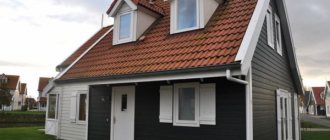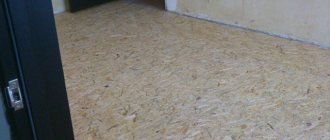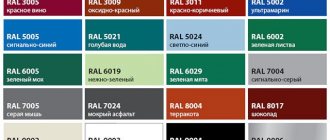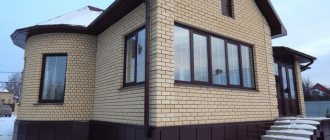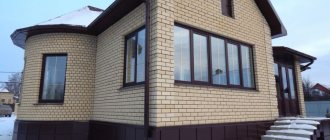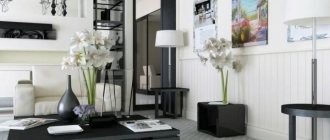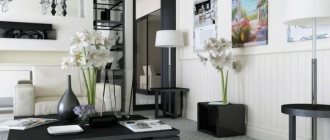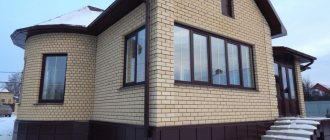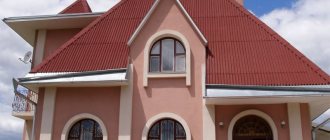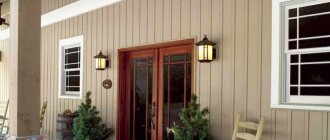A common material chosen for facing work on the facade is siding.
Which material has a large number of varieties, which are characterized by individual properties and advantages.
One of these varieties is fiber cement; it has a significantly lower cost compared to other types and many advantages.
The installation process is not too different from the installation of other varieties, but has some features.
Advantages and disadvantages
Fiber cement siding panels began to be produced in the 20th century. The material contains sand, cement and a certain amount of fibers of synthetic or natural origin. Such fibers are necessary to create a compacting, reinforcing layer, which is obtained after their dissolution in the general composition.
This layer provides high strength and reliability to the panels.
Due to the above joint and the special technologies used for its production, a material is obtained that meets a greater number of requirements regarding performance characteristics.
This material is produced in Germany, the USA, Belgium, Poland, Japan, China and Russia. There are also many different manufacturing companies, which are described in more detail below.
A type of fiber cement siding is used as a finish to give the facade of the house an attractive appearance and at the same time to provide protective functions to the surface of the walls. Wall materials are often destroyed by various weather phenomena, such as hail, rain, ultraviolet rays, wind and snow.
Fiber cement siding has a wide range of colors and textured patterns that are suitable for finishing any type of structure.
You can give your home absolutely any appearance, since the panels are produced with imitation stone, wood or brick. If necessary, such material is supplied for coloring.
Regarding operational properties, the following list of advantages is highlighted::
- the material has a high degree of resistance to any environmental phenomena and serious fluctuations in temperature;
- is not subject to destruction under the influence of chemical or aggressive substances;
- resistant to the appearance and spread of microorganisms, fungi and mold;
- The material is characterized by the absence of deformation even during shrinkage of the house or any other processes. Characterized by compressive and bending strength, maintaining its original dimensions;
- has high fire resistance and is a fireproof material;
- very easy to install and easy to maintain;
- provides the house with a good degree of sound insulation;
- is an environmentally friendly material that does not emit toxic substances into the atmosphere.
Regarding the shortcomings that in some cases you may encounter, there are few of them.
The significant ones are:
- moisture absorption capacity, which is up to 7%;
- the likelihood of the panel changing its shape due to exposure to moisture (2%).
NOTE!
Such shortcomings can be avoided by purchasing material from reliable and reputable manufacturers who produce high-quality fiber cement siding.
DIY making
The DIY process takes time and knowledge. Siding is created from a special mixture of high-quality cement and special cellulose fiber (cement-fiber version). This finish does not burn and does not require much maintenance during operation. It is necessary to make several forms, fill them with concrete and immerse the fiber in them. If you want to make this type of plate, it is important to first think through all the dimensions and plan the holes.
Tip: to prevent the plates from gaining weight due to a large amount of moisture, you will need to cover them with a waterproof compound (you can simply paint them).
Specifications
As for the technical characteristics, they depend directly on the specific brand of the manufacturer.
But, for the most part, the technical characteristics include the following:
- the length of the panels is 3600 mm ;
- 1.86 meters wide ;
- thickness reaches up to 1.2 cm ;
- the bending strength parameter is 24 MPa ;
- the number of cycles that the material is capable of withstanding at low threshold temperatures is 150;
- percentage of water absorption – 20;
- flammability group – G1 ;
- the weight of one panel is 12.2 kilograms .
Here you can see a comparative description of Japanese fiber cement siding, and below we will look at domestic and European manufacturers.
Advantages of the material
When assessing the technical and operational qualities of fiber cement panels, the following advantages of their use can be identified:
- Economical. The cost of the panels is relatively low.
- Ecological cleanliness. Modern components are non-toxic and do not have a harmful effect on human health.
- UV resistance. The panels do not fade, maintaining their aesthetic appearance.
- Good thermal insulation characteristics, allowing to reduce building heating costs.
- The material has noise-absorbing properties.
- Strength. The plates are resistant to shock, vibration, and mechanical damage.
- Durability. The average service life of panels is at least 30 years.
- Versatility. They are used for external and internal work in buildings for various purposes.
Fiber cement retains its technical characteristics for a long time, without the need for repair work. That is, when using it, the operating costs of maintaining the building are reduced.
Siding Kedral
This company produces siding panels that have a beautiful decorative appearance, have deep relief and are able to imitate a variety of natural materials, such as brick, stone, metal and glass.
Such panels provide a high level of protection for the entire structure . It is also possible to carry out facing work using these panels indoors. Kedral siding is mainly used to imitate brickwork on the surface of facades.
Installation work is permitted in any weather conditions, regardless of the time of year. The service life of the material is 2 times longer than that of natural stone . The material is characterized by an increased level of strength and elasticity, and is not subject to rotting, combustion, moisture or corrosion processes.
It is also not afraid of insects, scratches and any kind of minor mechanical damage.
Photo of Kedral fiber cement siding:
Types of fiber cement panels
Currently the following types of products are distinguished:
- Under natural wood. Perfectly replicates the texture and texture of a wood cut. The cost of such panels is much less than natural material, which makes it more preferable from an economic point of view. In addition, the coating does not require special care and retains its external qualities for many years.
Siding exactly replicates the texture of natural wood - Under a stone. This type of imitation is in great demand; the cladding repeats the structure of crushed stone. The presence of many decorative variations makes it possible to create individual design solutions.
- Under the brick. Panels can imitate masonry, including aged coating. A wide range of shades gives the surface a completely natural look.
The variety of options allows you to implement unique solutions that will stand out from the rest.
The range of modern fiber cement coatings is very diverse
Siding Rospan
The siding company produces products similar to Japanese ceramic products. The panels are available in dimensions 1593 X 455 X 14 mm. This siding is characterized by a three-layer coating, for which the warranty stated by the company is 10 years . This layer is represented by acrylate-adhesive paint and a transparent silicone layer.
Depending on the textured pattern, the depth of the relief can reach 4 mm. Considering that the production uses drying and molding under high pressure, the end result is a material that fully imitates natural stone. The panels remain in their original form even under conditions of high humidity (95%) and temperatures from -50 to + 50.
The degree of water absorption generally does not exceed 16%; the material is not characterized by swelling in thickness and deformation . If the low temperature regime is maintained for 50 cycles or more, then the level of bending strength decreases by no more than 10%.
The pressure that the panel can withstand is 45-65 megapascals. The material is characterized by fire-fighting properties, it is difficult to ignite, and does not support combustion.
Using siding produced by Rospan, it is possible to solve the following list of problems:
- with its help, financial costs for external finishing are reduced, in comparison with the use of Japanese-made panels;
- costs are also reduced for working hours, since the required number of work cycles is reduced;
- thanks to the material, the thermal conductivity of the walls of the house is reduced;
- the level of load on the supporting elements of the structure and foundation is reduced in comparison with other options for finishing work, insulation and decoration measures;
- The lifespan of the facade increases, and there is no need to resort to additional maintenance and periodic restoration.
Reviews from home owners
The finished façade with fiber cement siding looks attractive. Installation did not pose any difficulties. I specifically checked to see if the paint was fading: over two seasons I didn’t notice any changes, which was pleasantly surprising. I was pleased with the very high-quality painting and long service life; I did not regret my choice. I recommend everyone to follow my example.
I would like to note that the price per m2 is not low, but it is worth it. The material survived severe frosts and did not find any defects on it. I have already advised my friends to choose him. I don’t regret that I overpaid, the quality is high and the appearance is attractive. The material is excellent for exterior decoration of the house, I was convinced of this myself. I am happy with my purchase, the fiber cement siding turned out even better than I expected. My friend and I were able to handle the installation ourselves. The house looks beautiful, my wife approved of the work.
Siding Latonite
This siding is produced in Switzerland, Austria and Germany. For production, autoclaving and pressing technology is used . This makes it possible to achieve an increased level of strength and density of the slab structure.
This is a fairly practical material for use in finishing work. The texture of the produced panels is varied, it can be smooth or have a relief that imitates brick material, natural stone or logs. It has all the necessary properties to ensure reliable protection of the facade . It can be painted in various colors, and it is also possible to order custom-sized panels.
IMPORTANT!
This siding must be painted where it is cut to maintain its durability.
Insulation system
FCS is best suited for use in ventilated facade systems. This is a fairly simple way to carry out external cladding, and in terms of curb weight it is much more profitable than porcelain stoneware and many sheet materials. The disadvantage lies in the fact that according to standard technology, finishing and thermal protection are installed almost simultaneously, which is always associated with high one-time investments of funds and labor hours.
Sometimes it is necessary to install a supporting system after insulation. For example, high-density mineral wool can safely spend one or two years under wind protection, after which it can be used for decorative finishing. In such cases, it is necessary to ensure that the subsystem consoles are fastened directly to the load-bearing layer of the wall. That is, cut out the insulation, secure the brackets, and then fill the voids with polyurethane foam or cotton wool flaps. It would not be superfluous to place a piece of thin insulator, for example, PPE tape, under the bracket.
In ventilated facade systems, there is no point in using polymer insulation, which restricts the passage of steam through itself and the load-bearing layer of the wall. The technology of insulation with mineral materials is well developed and can provide equivalent thermal protection with a slight increase in the thermal insulation layer. With the low weight of the FCS, it is possible to use sufficiently long subsystem brackets; accordingly, the thickness of the insulation can reach 200–250 mm without compromising the strength of the fastening.
Protection against blowing is required; vapor-permeable membranes are used for this. Sometimes, when installing without overlap, it is necessary to take into account the slight impact of ultraviolet radiation on the wind barrier; in such cases, it is either planned to replace it in 15–20 years, or materials based on fiberglass are used. A vapor barrier is always installed between the wall and the insulation; its throughput is determined by thermal engineering calculations.
Installation of sheathing
installation process is represented by the following steps :
- initially, using self-tapping screws, a film of waterproofing material is attached to the wall of the house;
- After this, the frame is installed on top of the waterproofing layer. For this, wooden blocks are used, the cross-section of which is 5 x 5 mm ;
- If the surface of the building requires insulation measures, then insulation boards are inserted between the sheathing beams, which are pre-cut to the required size. In this case, it is necessary to maintain a certain thickness of the insulating material, which should not be greater than the thickness of the beams ;
- after laying the insulation material, attach the second layer of waterproofing;
- then begin the installation of vertical sheathing, which will serve as the basis for installing siding panels;
- wooden beams are screwed to a frame containing insulating material. This allows you to create a ventilated façade;
- the second row of sheathing can be constructed from wooden blanks, the thickness of which should be at least 3 cm. As a result, the thickness of the entire cladding will be 15 cm .
In the case of vertical attachment of siding, the frame is mounted in a horizontal position. It is also necessary to build jumpers between the main posts . It is recommended to adhere to a step in the process of arranging the frame equal to 40 cm.
Main Applications
Brick or wood siding made of fiber cement can be used as a facade material in the construction of the following objects:
- cottages;
- country houses;
- children's preschool institutions;
- public buildings;
- business centers;
- holiday homes;
- hotels;
- motels.
Facade material can be used in all climatic zones of our country.
Siding for the plinth has proven itself to be excellent; its practical and strength characteristics are not inferior to concrete or stone. At the same time, the technology for finishing the basement floor is available to any home craftsman. The material is used for finishing cornices, chimneys, fences, gazebos and garden pavilions.
Installation of slabs
To carry out cladding work using siding panels, it is necessary to use special fittings - clamps. Such fasteners are commercially available and are included with the purchased material .
Each type of siding requires the use of clamps specialized in size and strength level. If there is no desire to use such accessories, then the siding is fastened with stainless steel self-tapping screws.
The siding installation process is as follows :
- begin the process by attaching the starting strips. They are installed on vertical wooden posts using screws. If the panels are installed in a horizontal position, then the starting racks must also be mounted horizontally . The first plank is installed from the very bottom of the wall surface. This moment is quite important, since the attached first planks are responsible for the further position of the slabs. It is necessary to install as accurately and evenly as possible; for this it is better to use a level, taking measurements first;
- The next step is to install the corner profiles. They are mounted on the edge of the walls and act as guides . Such fittings must be attached to a wooden frame using self-tapping screws;
- The connecting profiles are attached to the constructed frame, and the step should not exceed 1 m. The panels can be installed using various layouts . There is a straight or chess layout;
- To carry out the process of cutting panels, it is necessary to measure the distance from one vertical corner profile to another. The resulting parameter is the width to which the panels must be cut ;
- After cutting, they begin to install the first panel, the location and direction of which will be the starting strip. The entire installation process starts from the bottom of the wall to the top. The panels must be overlapped; installation of the material to the wooden frame is carried out using clamps or by drilling and fastening with screws . It is necessary to drive the fasteners into the surface of the siding panel. It is better to use a screwdriver for this. The head of the screw must be recessed into the product, since after this, the surface of the screws is coated with a special compound to prevent the appearance of corrosive processors;
- The distance for the next siding panel is measured in the same way. Cutting and fastening are carried out by analogy . The junction of two siding elements is protected with a waterproofing film, which is applied to vertically located posts;
- the rest of the process of installing the cladding product is carried out in the same way, installing siding elements one above the other, observing the overlapping installation. The joints are covered with waterproofing material ;
- installation of the finishing strip is an exception to the entire process. Attachment is carried out using clamps if there was no need to cut it. If the finishing strip has been cut, then fixation must be carried out using mushroom-shaped screws , which must first be painted in the appropriate color.
NOTE!
The process of cutting material is best done from the reverse side. This is explained by the fact that after cutting off part of the material, the edges may chip or become jagged.
In addition to the above measures, the installation process requires compliance with several points:
- fasteners must be hidden after the panels are installed. To do this, they resort to using a corrective dye that matches the color of the product. For cladding, it is recommended to purchase this dye immediately with the material. In the case of using clamps, there is no need to mask the fasteners, since they are hidden under the surface of the panels;
- After cutting the material, it is necessary to paint the areas where the product is cut. A good option for such purposes is retouching dye. Using a small brush, paint over all cut areas and any resulting chips;
- It is necessary to ensure the tightness of all seams and gaps. It is undesirable to use silicone material for this; it is best to carry out such an event using colored sealant . This will create a harmonious appearance of the entire tiled surface.
Flaws
Like any material, fiber cement siding or boards have disadvantages. If we talk about operational issues, there are almost no downsides. Properly installed, it does not change for a long time. Even the pieces left on the street have not changed in any way over the year, and their ends are not sealed. But all this concerns quality material. And yet, there are also disadvantages:
- High price. It consists not only of the cost of the panels or siding themselves. There are also costs for the structure to which all this will be attached, plus expensive fasteners that are not subject to corrosion. Can be matched to match the roofing material
- Difficult installation. In the sense that the units must be made as recommended by the manufacturer. It is also necessary to treat connections, joints, cuts, and fastener installation sites with the recommended composition (paint or sealant). All this time, and the paint/sealant costs a lot.
- Quite a specific look when using fiber cement siding. But this can be argued, since there are different textures, and they can be combined in different ways, getting a different style and look - from modern to classic.
- Large weight that must be taken into account at the foundation planning stage. And not all walls can be “hung” with a large mass.
In general, fiber cement siding and boards are not the cheapest, but they are a good material. It has been on our market for more than ten years. If it were bad, there would be a sea of negative reviews and complaints. There is none of them. There is a generally positive operating experience with some nuances, which are usually caused by installation errors.
